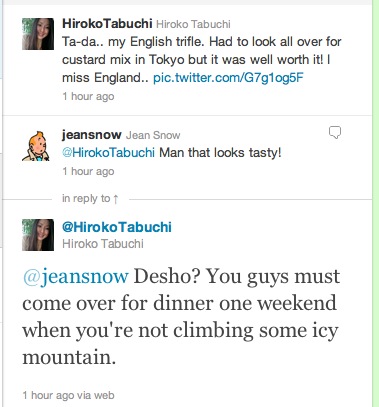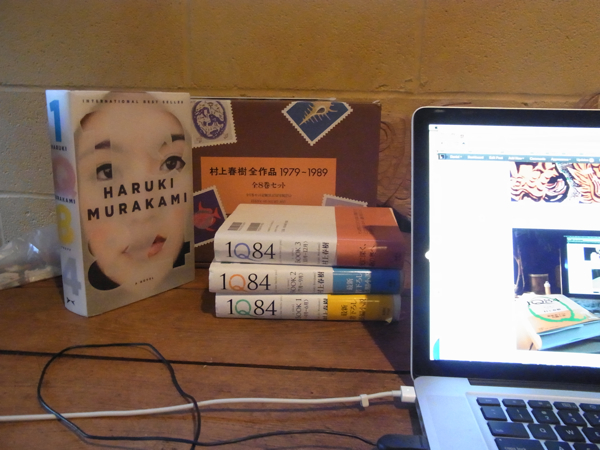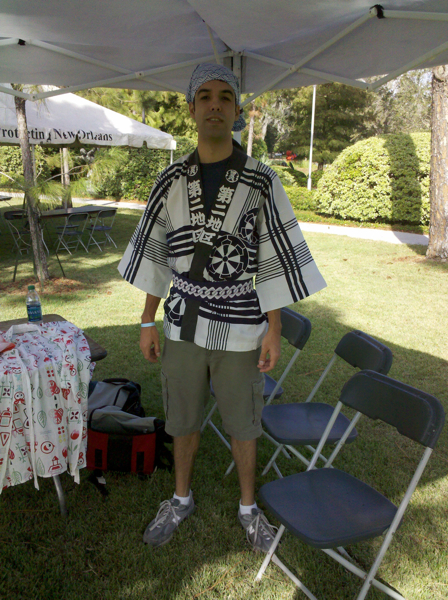
I have a piece up on Neojaponisme today about the reception of the English translation of 1Q84 abroad. Murakami has been divisively cool in the U.S. ever since The Wind-up Bird Chronicle was published in 1997 and lauded in The Hipster’s Handbook (which gets it all so so wrong! Hard-boiled Wonderland a dud?!); his popularity was always treated like that of a well-respected indie band: he was critically respected to a great degree, and even if people didn’t “dig,” they understood why he was so popular and maybe even quietly fumed that they couldn’t join the bandwagon. Some probably even invented reasons to dislike him and practiced delivering them in front of their mirrors.
The tides have turned. The great critical organ has been rent divisive. I didn’t follow the response to Kafka on the Shore or afterdark all that closely, but I don’t think it was as divided as the response to 1Q84 has been. I remember being baffled by Updike’s response to Kafka (“Japanese spiritual tact”? WTF, mate?), but a lot of people (other than Jay Rubin) seem honestly to have enjoyed Kafka. I actually liked afterdark. Neither of those novels were as heavily anticipated as 1Q84, though.
One thing we’ve learned is that Murakami has aged like a motherfucker, and I don’t think he has much more to say that isn’t fueled by the books he reads or researches. His first two novels and Norwegian Wood all take his own experience as the seed for the concepts he addresses – coming of age, love, loss, the death of the student movement in Japan. Wild Sheep Chase and Dance Dance Dance, while somewhat researched, still deal with concepts that Murakami seems invested in and able to grasp firmly in his noggin – results of Japan’s economic development, ghosts of the early 20th century push for modernization and results of the war. And Hard-boiled Wonderland deals almost strictly with memory, making it one of his more focused works. (Notice that I didn’t mention Wind-up Bird. Let’s just ignore that one. La la la la la, I can’t hear you…)
1Q84 would make sense if it were a novel about cults or religion, since that is something that Murakami knows a good bit about thanks to Underground, but it isn’t a novel about cults or the cult mindset. It’s something different altogether, and with the text that he gives us, it’s impossible to know what that something is. Good and evil are not black and white? Love conquers all? He’s trying awfully hard to say something, something very serious, but it becomes clear that anytime Murakami introduces a new Concept (and they do feel awfully heavy, which is why I capitalized the C) into his novels, he ends up citing it with some sort of book the protagonist has read. This gets tiresome very quickly and doesn’t feel organic like with his older works.
And as noted in the piece, Murakami’s playful tone is completely absent from this book. All that’s left is unintentional humor like the lesbian sex scene quoted in the post and this give and take between Aomame and the evil (or is he?!) badguy of the book, “Leader”:
“All right, then,” Aomame said. “There is no firm basis. Nothing has been proved. I can’t understand all the details. But still, it seems I have to accept your offer. In keeping with your wishes, I will obliterate you from this world. I will give you a painless, instantaneous death so that Tengo can go on living.”
“This means that you will agree to my bargain, then?”
“Yes. We have a bargain.”
“You will probably die as a result, you know,” the man said. “You will be chased down and punished. And the punishment may be terrible. They are fanatics.”
“I don’t care.”
“Because you have love.”
Aomame nodded.
The man said, “ ‘Without love, it’s a honky-tonk parade.’ Like in the song.”
I’ve been reading through the Japanese version of Dance Dance Dance recently, 2-3 pages a day which I follow with an equivalent amount of the English translation. I’m only about 20% through the novel, and while it does show some of the same weaknesses as 1Q84 (terrible pacing, repetition of weird actions intended to express character traits, lack of direction), Murakami feels in control of the Concepts of the book. He’s able to play with them in a way that’s funny and critical at the same time.
The boku narrator of Dance Dance Dance senses that something is fishy about the newly developed Dolphin Hotel, and one of the employees mentions an investigative report published in a weekly magazine. Boku tracks down the article, which details the real estate gymnastics that had to be performed to get the property and build the new hotel. After going through it with the reader, this is boku’s response:
The reporter had devoted a lot of energy to following the paper trail. Still, despite his outcry—or rather, all the more because of his outcry—the article curiously lacked punch. A rallying cry it wasn’t. The guy just didn’t seem to realize: Nothing about this was suspect. It was a natural state of affairs. Ordinary, the order of the day, common knowledge. Which is why nobody cared. If huge capital interests obtained information illegally and bought up propery, forced a few political decisions, then clinched the deal by having yakuza extort a little shoe store here, maybe beat up the owner of some small-time, end-of-the-line hotel there, so what? That’s life, man. The sand of time keeps running from under our feet. We’re no longer standing where we once stood.
The reporter had done everything he could. The article was well researched, full of righteous indignation, and hopelessly untrendy.
Unfortunately I think the same could be said about the Concepts that Murakami is addressing in 1Q84 – nobody cares (not really), and they are untrendy.
(Art courtesy of Ian Lynam and Neojaponisme.)






